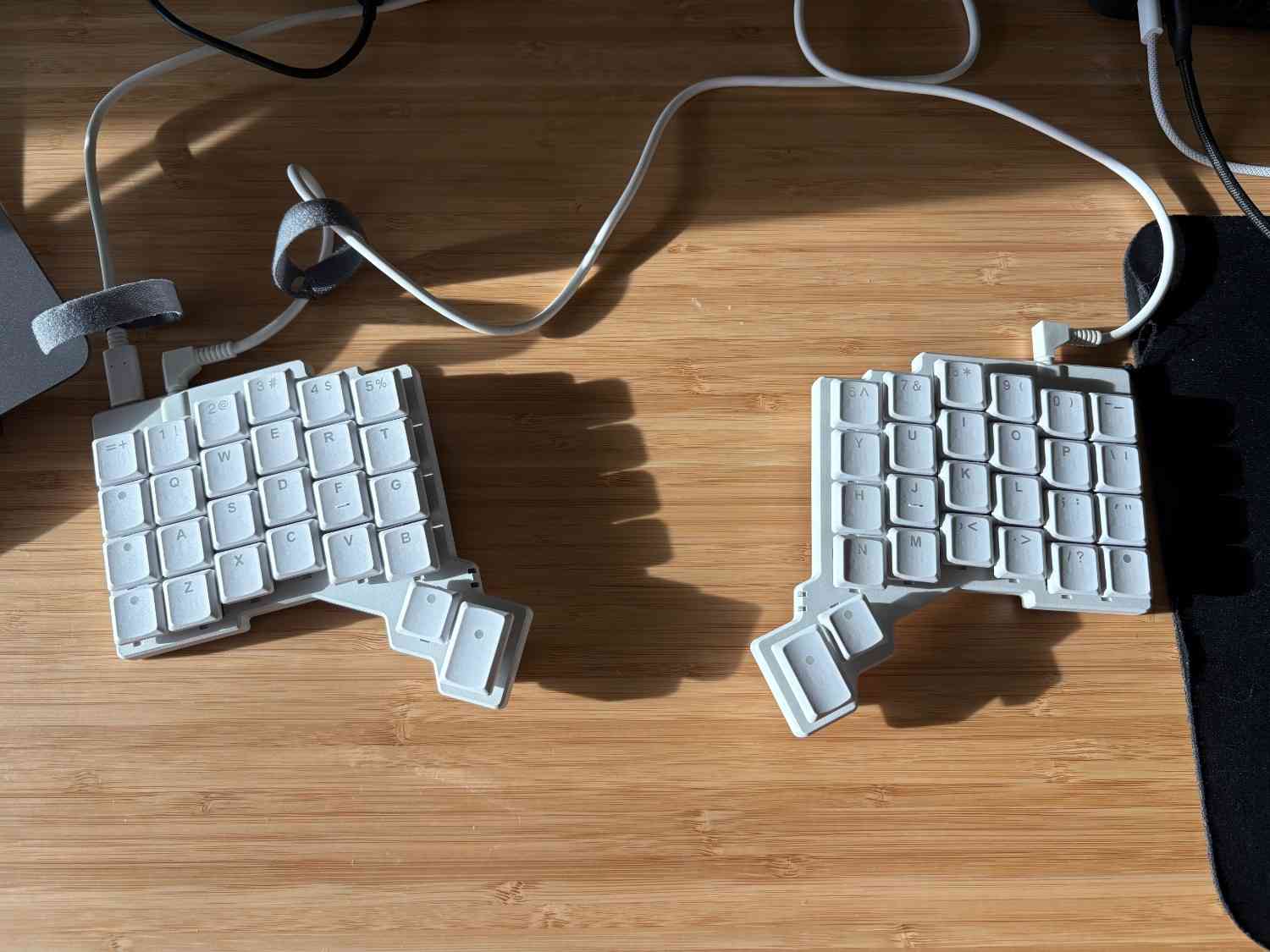1 Week - My journey in ergonomic keyboard
Today marks my first week using an ergonomic keyboard. But before sharing my review so far, let me give you a bit of context.
I chose the Voyager Keyboard not because it’s the best—honestly, I don’t even know if it is—but because it’s backed by a company, comes pre-built (not DIY), has solid support, and offers a large ecosystem of tools. Nothing fancy there! But I have to say, their support is off the charts. I had some trouble importing the keyboard to Portugal, since it got held up at customs, and they really helped me out.
That aside, the keyboard itself is absolutely beautiful. I fell in love with the colors, layout, and keycaps right away. Oh boy, I’ve just started a big journey into the world of ergonomic keyboards!
The very first thing I learned was about the home row: touch typing. I had never even heard of it before, and learning it has been quite the journey...
 If you want to try it yourself, here’s the link.
If you want to try it yourself, here’s the link.
My first week
My first day was rough—just pressing each key with the right finger was painful. I spent the whole weekend practicing typing drills on EduClub.
When Monday at work came around, I was still struggling a lot, but I stuck with my ergonomic keyboard.
Now, after a week, I can confidently say I’m typing at about 24 WPM. Still slow, but definitely improving! My goal is to reach at least 50–60 WPM.
Review
- Pay close attention to the layout and language settings. I was fully aware that I was buying an English layout, and I don’t mind it since 90% of my typing is in English or programming.
- Switching between Portuguese and English was tough at first, but once I learned how to flash (reprogram) the keyboard, it became much easier.
- Ergonomic keyboards are expensive as hell—be fully aware of that before jumping in.
- You need to be 100% persistent. I’ve been typing in a Portuguese QWERTY layout for more than 18 years in the old-fashioned way, so unlearning those habits takes real effort.